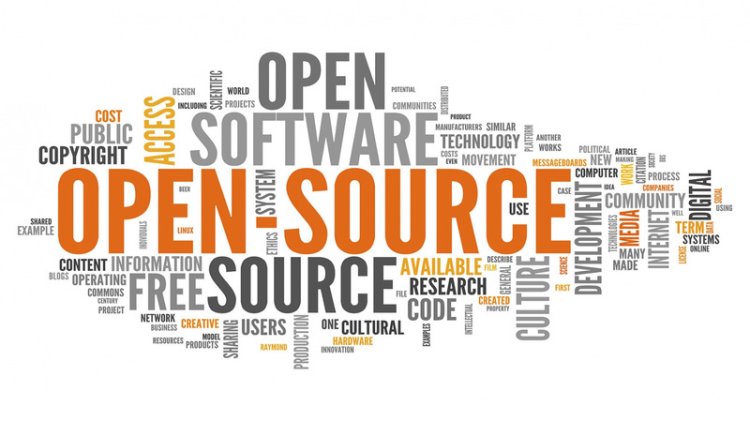Master Open Source Monetization for Sustainable Growth
Unlock the potential of open source monetization strategies to drive sustainable growth and boost your revenue. Start your journey today!
Share this Post to earn Money ( Upto ₹100 per 1000 Views )

In the dynamic landscape of technology, open source has emerged as a transformative force, promoting collaboration, transparency, and innovation. However, one critical aspect often overlooked is Open Source Monetization. Successfully monetizing open source projects can lead to sustainable growth for businesses and developers alike. This article explores strategies, challenges, and best practices for mastering open source monetization.
Understanding Open Source Monetization
Open source monetization refers to the various methods through which open source software (OSS) projects can generate revenue. Unlike traditional proprietary software, open source projects allow users to access, modify, and distribute code freely. This model can be challenging for developers seeking to turn their passion into profit. However, several monetization strategies exist, each catering to different needs and market conditions.
Key Strategies for Open Source Monetization
1. Freemium Model
One of the most popular strategies in open source monetization is the freemium model. Here, developers offer a basic version of their software for free, while charging for premium features, support, or additional services. This approach allows users to test the software before committing to a purchase, building trust and encouraging upgrades.
2. Support and Consulting Services
Providing support and consulting services is another effective way to monetize open source projects. Many businesses prefer to pay for expert assistance to ensure smooth integration and optimal performance of the software. By offering tailored support, companies can establish long-term relationships with clients and create a reliable revenue stream.
3. SaaS (Software as a Service)
Transitioning to a SaaS model involves hosting the open source software on cloud infrastructure and charging users a subscription fee for access. This model not only simplifies deployment for customers but also allows developers to maintain control over the software, ensuring updates and support are readily available. Notable examples of this approach include GitLab and WordPress.com.
4. Dual Licensing
Dual licensing enables developers to offer their software under two different licenses: one open source and one proprietary. This strategy allows companies to cater to both communities—those who prefer free, open access and those willing to pay for additional features, warranties, or services. Red Hat is a prime example, offering its open source Linux distribution while also providing commercial licenses for enterprises.
5. Crowdfunding and Donations
Many open source projects rely on crowdfunding platforms or community donations to support their development. By engaging with users and building a loyal community, developers can solicit financial support directly from their user base. Platforms like Patreon and Open Collective facilitate this process, enabling developers to receive funds while maintaining transparency with their supporters.
Challenges in Open Source Monetization
While open source monetization offers promising avenues for revenue generation, several challenges exist:
-
Perception Issues: Many users believe that open source software should be free, making it difficult to convince them to pay for services or features.
-
Competition: The abundance of free alternatives can hinder the ability of developers to charge for their solutions.
-
Maintaining Community Trust: Developers must balance monetization with the ethos of the open source community. Over-commercialization can lead to backlash from users who feel the project is straying from its original mission.
Best Practices for Successful Open Source Monetization
To effectively master open source monetization, developers and businesses should consider the following best practices:
-
Understand Your Audience: Identify the needs and preferences of your user base. Conduct surveys and engage with the community to tailor your monetization strategy accordingly.
-
Build a Strong Community: Cultivate a loyal user community that feels invested in the project. Active engagement through forums, social media, and user feedback can foster a sense of ownership and encourage support.
-
Offer Value: Clearly communicate the value of your paid services or features. Highlighting how these offerings enhance the user experience can encourage users to invest in them.
-
Focus on Quality: Ensure that both the free and paid versions of your software are of high quality. A well-maintained product will enhance your reputation and encourage users to pay for premium options.
-
Be Transparent: Maintain transparency in your monetization efforts. Clearly outline how funds will be used, and keep the community informed about changes and developments.
Conclusion
Mastering Open Source Monetization is crucial for developers and businesses seeking sustainable growth in today’s competitive landscape. By employing diverse strategies such as the freemium model, offering support services, or adopting a SaaS approach, developers can create viable revenue streams while remaining true to the open source ethos. Navigating the challenges of perception, competition, and community trust requires a thoughtful approach and a commitment to delivering value. With the right strategies in place, the future of open source monetization can be both prosperous and impactful.















